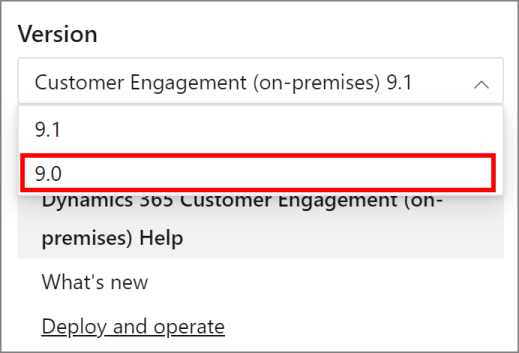Note
Access to this page requires authorization. You can try signing in or changing directories.
Access to this page requires authorization. You can try changing directories.
This article doesn't apply to the Dynamics 365 Customer Engagement (on-premises), version 9.1 update. For information about new features in update 9.1, see What's new.
For information about this topic for Dynamics 365 Customer Engagement (on-premises), version 9.0, select the version located above the left navigation pane.

The Microsoft Dynamics 365 Reporting Extensions are data processing extensions that are installed on the SQL Server Reporting Services server. Microsoft Dynamics 365 Reporting Extensions accept the authentication information from Dynamics 365 Server and passes it to the SQL Server Reporting Services server. Microsoft Dynamics CRM Reporting Extensions Setup includes both the Fetch data processing extension and SQL data processing extension.
The Microsoft Dynamics 365 Reporting Extensions are required for all major reporting tasks in Dynamics 365 Customer Engagement (on-premises), such as working with default (out-of-box) Dynamics 365 Customer Engagement (on-premises) reports, uploading custom reports, creating Report Wizard reports, or scheduling reports. Microsoft Dynamics 365 Reporting Extensions must also be installed before you import or provision new organizations.
The Microsoft Dynamics CRM Reporting Extensions Setup does the following:
Installs Fetch data processing extension and SQL data processing extension on the SQL Server Reporting Services server.
Installs custom assemblies used by default reports and wizard reports on SQL Server Reporting Services server.
Creates default reports (SQL-based) for the default organization both on Dynamics 365 Server and SQL Server Reporting Services servers.
The following table explains what reporting options will be available to you if you install Microsoft Dynamics 365 Reporting Extensions.
What reports will work?
| Installed? | Default reports | Custom SQL-based reports | Fetch-based Wizard reports | Custom Fetch-based reports |
|---|---|---|---|---|
| No | Clean installation: Will not be available. |
- Can’t be scheduled. - Can be uploaded and run if Dynamics 365 Server and SQL Server are installed on one computer or Trust for Delegation is configured. |
Will not be available. | Cannot be uploaded and run. |
| Yes | Will be published for the default organization. | Can be uploaded and run. | Can be created, run, and scheduled. | Can be uploaded, run, and scheduled. |
Important
Microsoft Dynamics 365 Reporting Extensions shouldn’t be installed on an instance of SQL Server Reporting Services that is running under an account that is a member of the Active Directory SQL Access Group. This can occur when SQL Server Reporting Services is running under the same account as a Dynamics 365 Server service or feature. This configuration can make the system vulnerable to certain attacks. During installation, Setup detects this scenario and you can click Help for information about how to work around the issue.
Note that when you install Microsoft Dynamics 365 Reporting Extensions, you have the option of installing the component on a different server that is running Reporting Services. Therefore, by isolating Microsoft Dynamics 365 Reporting Extensions on a separate instance of SQL Server, which does not store the Dynamics 365 Customer Engagement (on-premises) databases, report performance may be improved.
Microsoft Dynamics 365 Reporting Extensions requirements
Microsoft Dynamics 365 Reporting Extensions has the following requirements:
You must complete Microsoft Dynamics 365 Server Setup before you run the Microsoft Dynamics CRM Reporting Extensions Setup.
You must run the Microsoft Dynamics CRM Reporting Extensions Setup on a computer that has SQL Server Reporting Services installed. For smaller data sets and fewer users, you can use either a single-server deployment, or a multiple-server deployment with one computer that is running SQL Server for Dynamics 365 Customer Engagement (on-premises), and another server for SQL Server Reporting Services. With larger datasets or more users, performance will decrease quickly when complex reports are run.